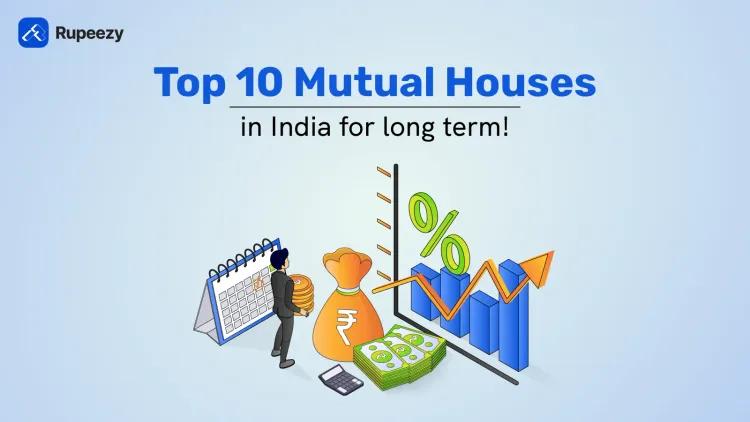What is the Sharpe Ratio in Mutual Funds?


00:00 / 00:00
We often feel optimistic and confident when the markets are rising, but when markets decline, fear and uncertainty take over, and we tend to blame the downturn without understanding the risks involved. Many investors focus only on the returns they earn and overlook how much risk they are taking to achieve those returns. It can lead to questionable investment decisions.
When it comes to mutual funds, it’s important to look beyond just returns. In this article, we will understand what is Sharpe Ratio, its formula, a sharpe ratio example, and why it matters for mutual fund investors. We’ll discuss its importance and its limitations so you can better evaluate your decision on investments. Let’s dive in to understand more.
What is Sharpe Ratio?
The Sharpe Ratio tells you how much extra return an investment gives for the risk you take. It compares your investment's return to a safe option, which is the risk-free rate; take a fixed deposit as an example for that, and it helps you to check if you're getting rewarded enough for the risk taken in value. Let’s say, if two funds give similar returns but one is more stable, it will have a higher Sharpe Ratio. Investors use it to judge whether taking extra risk is actually worth the extra return. Let’s dive in further to understand the formula and what is a good sharpe ratio.
Sharpe Ratio Formula
As we understand the Sharpe ratio, we will understand the formula to evaluate it and how to calculate sharpe ratio.
Sharpe Ratio = (Fund Returns - Risk-Free Rate) ÷ Fund’s Standard Deviation
Which means,
Fund Returns: The investment's expected or actual return on a monthly or annual basis. You can use average returns.
Risk-Free Rate: The return from a safe investment, typically a government bond or fixed deposit.
Fund’s Standard Deviation: Measures how much the investment's returns fluctuate, also known as volatility.
What is a Good Sharpe Ratio?
As we understood the formula, here is how the ratio can be interpreted:
Higher Sharpe Ratio = Better risk-adjusted returns.
A Sharpe Ratio of more than 1 is generally considered good by many investors.
A Sharpe Ratio under 1 suggests that the returns do not sufficiently compensate for the amount of risk taken.
Sharpe Ratios greater than 2 and 3 are considered good and excellent. Likewise, if the Sharpe Ratio turns negative, it indicates that the fund’s returns fall below the risk-free rate. It shows that the fund doesn’t reward you sufficiently for the risk involved. You should reconsider your investment and possibly look for safer alternatives.
Why Sharpe Ratio Matters in Mutual Funds
The Sharpe Ratio is one of the risk ratios used while assessing mutual funds because it shows how much return a fund delivers for the amount of risk it takes. Instead of just chasing high returns, investors can use the Sharpe Ratio in mutual funds to find funds that offer better returns without extreme ups and downs. It helps compare similar funds more fairly and ensures you’re not mistakenly picking a fund that’s too risky for its reward.
How to Calculate the Sharpe Ratio
Let’s take Fund A, X, Y, and Z to understand the Sharpe ratio. Standard Deviation and Returns differ for each fund. But what if returns are the same for Fund A and X, but when the standard deviation varies, the lower standard deviation gets a higher Sharpe ratio. Let us take a look at different funds.
Fund A: Returns - 15%, Standard Deviation - 6%
Fund X: Returns - 16%, Standard Deviation - 9%
Fund Y: Returns - 20%, Standard Deviation - 10%
Fund Z: Returns - 12%, Standard Deviation - 7%
Now let us calculate the Sharpe ratio using the above fund data, and let us consider a bank fixed deposit as risk-free rate which would be around 6%.
Particulars | Fund A | Fund X | Fund Y | Fund Z |
Returns (%) | 15 | 16 | 20 | 12 |
SD (%) | 6 | 9 | 10 | 7 |
Risk-free rate (%) | 6 | 6 | 6 | 6 |
Sharpe Ratio | 1.50 | 1.11 | 1.40 | 0.86 |
From the above calculations, we can see Fund Y has the highest returns; however, Fund A has the highest Sharpe ratio, which suggests returns with better risk. Despite Fund X delivering a higher return than Fund A, the standard deviation is the factor that differentiates and impacts the sharpe ratio for Fund X, making it less favourable.
If you can see, the returns are varying across the funds, but analyse those funds in tandem to the standard deviation to arrive at the conclusion.
Best Sharpe Ratio Mutual Funds in India
After looking at the formula and calculations, here are some of the best Sharpe ratio mutual funds in India.
Largecap Fund | Standard Deviation (%) | Sharpe Ratio |
11.99 | 1.1 | |
13.29 | 1.05 | |
12.11 | 1 | |
12.94 | 0.87 | |
12.81 | 0.86 | |
Midcap Fund | Standard Deviation (%) | Sharpe Ratio |
16.24 | 1.24 | |
14.93 | 1.18 | |
15.52 | 1.11 | |
16.15 | 1.09 | |
15.85 | 1.08 | |
Smallcap Fund | Standard Deviation (%) | Sharpe Ratio |
16.55 | 1.19 | |
16.3 | 1.05 | |
18.15 | 1.03 | |
15.18 | 0.98 | |
16.07 | 0.96 |
(Note: The above details are based as of 22nd May 2025, and they change constantly.)
As you can see, the small-cap and mid-cap funds have the highest standard deviation compared to large-cap funds. Likewise, the Sharpe ratios are also higher for the mid and smallcap funds, which indicates the higher risk brings higher returns.
Importance of Sharpe Ratio
As we looked at some of the best Sharpe ratio funds in India, we will look at some points on its importance.
Measures Risk-Adjusted Returns: The Sharpe Ratio shows how much return a mutual fund gives relative to the risk it takes. This helps investors to handpick funds only based on performance but funds which manage volatility wisely for positive long-term results.
Comparing Similar Funds: When two mutual funds have somewhat similar returns, the Sharpe Ratio helps you to choose the one with more stable performance. A higher Sharpe Ratio means better returns per unit of risk, which makes comparisons more meaningful.
Evaluates Fund Managers: A consistently high Sharpe Ratio often reflects a fund manager’s ability to deliver better returns without taking high risk. It’s a good indicator of smart portfolio buildup and invites disciplined risk management.
Simplify Decision-Making: The Sharpe Ratio turns complex return and risk data into a single number that can make it easy for investors to assess fund quality. You don’t need to analyse standard deviation or returns separately, and you can combine both into one score.
Identifying Hidden Risks: A mutual fund may show high returns, but the Sharpe Ratio reveals if those returns come with high risks. It helps investors avoid chasing risky funds that may not be sustainable in the long run.
Useful across Market Conditions: The Sharpe Ratio works well in bull and bear markets and can help you to judge how well a fund performs even when markets are volatile. It adds a layer of consistency to fund analysis in different economic situations.
Limitations of Sharpe Ratio
Assumes risk is bad: Sharpe Ratio treats all fluctuations, like up or down, as risky. But in reality, positive returns over a period aren’t a concern for long-term investors. So it may not show a proper view on funds that have a high upside volatility factor but still perform well overall.
Pulled by Extremes: A few extreme returns, either very high or very low, can distort both the average return and standard deviation. This can make the Sharpe Ratio misleading for newer funds with short performance histories.
Ignores Other Risks: Sharpe Ratio focuses only on volatility but ignores other risks like liquidity risk, credit risk, or concentration risk. So a fund might appear strong by Sharpe standards but still carry hidden weaknesses.
Key Considerations when using the Sharpe Ratio
You can take some considerations while assessing funds using Sharpe Ratio, here are some as follows:
Compare your funds in the similar funds, like large-cap or any other category related to it, for understanding the risk undertaken to earn returns.
Check for consistency over different time periods (monthly or annually) for stable performance and rely on trusted sources for data collection.
Use the Sharpe Ratio alongside other performance metrics like Alpha and Beta or Sortino Ratios to get better clarity.
Make sure the Sharpe Ratio is parallel with standard deviation while comparing funds, as the ratio may be misleading.
Alternatives to Sharpe Ratio
Sortino Ratio
The Sortino Ratio measures how much return a mutual fund delivers for the downside risk it takes while ignoring upside volatility. Unlike the Sharpe Ratio, it focuses only on negative fluctuations, which actually matter more to investors. This gives a clearer picture of how well a fund protects capital while earning returns.
Treynor Ratio
The Treynor Ratio evaluates how much return a mutual fund earns per unit of market risk, measured by beta. It helps you to know how well the fund is performing compared to the broader market’s movement or benchmark. A high Treynor Ratio indicates that the fund manager is generating higher returns without taking on additional market risk, which makes this ratio valuable while comparing diversified equity funds that closely track or slightly differ from benchmark indices.
Conclusion
As we come to a conclusion, we understood the Sharpe Ratio, which helps you to make investment decisions by showing how much return you earn for the risk you take with mutual funds. Instead of just chasing high returns, you can focus on funds that manage risk well and offer stable performance. It’s important to consider the limitations and use other risk ratios like Sortino and Treynor Ratios too to make better informed decisions. Overall, the Sharpe Ratio helps you to assess mutual funds more effectively and build a portfolio that balances reward and risk wisely.
FAQs
Q. What is a good Sharpe ratio?
A Sharpe Ratio above 1 is generally considered good, indicating the fund provides better returns for the risk taken. Ratios above 2 or 3 are excellent, showing very strong risk-adjusted performance.
Q. What is Sharpe ratio in simple terms?
The Sharpe Ratio measures how much extra return you earn on an investment compared to a risk-free rate, adjusted for how much the investment’s value fluctuates. It helps you understand if you’re getting rewarded enough for the risk you take.
Q. Is a 0.7 Sharpe ratio good?
A Sharpe Ratio of 0.7 is below 1, so it suggests the fund’s returns may not fully compensate you for the risk taken. It’s not ideal but not necessarily poor. It indicates moderate risk-adjusted returns.
Q. Is a Sharpe ratio below 1 bad?
A Sharpe Ratio below 1 means you’re not being adequately rewarded for the risk you take. While it cannot be termed as bad always, it can signal that you should carefully evaluate whether the fund’s risk is worth the returns.
Q. What is maximum Sharpe ratio?
There is no fixed maximum Sharpe Ratio because it depends on achieving the highest returns combined with the best risk-adjusted performance and reasonable volatility. The fund with the best balance of these factors within its category is considered to have the highest or most favorable Sharpe Ratio.
Check Out These Related Articles |
The content on this blog is for educational purposes only and should not be considered investment advice. While we strive for accuracy, some information may contain errors or delays in updates.
Mentions of stocks or investment products are solely for informational purposes and do not constitute recommendations. Investors should conduct their own research before making any decisions.
Investing in financial markets are subject to market risks, and past performance does not guarantee future results. It is advisable to consult a qualified financial professional, review official documents, and verify information independently before making investment decisions.

All Category









